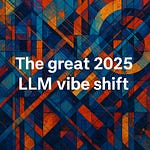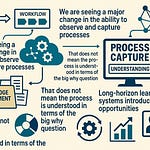Trying to figure out how many republicans, democrats, and independents are registered in each state is actually really hard. It’s not a trivial task. Even with all our modern technology and the extreme power of the internet providing outsized connectedness between things and making content accessible to searches. Even GPT-4 from OpenAI with some decent plugins turned on will struggle to complete this task.Your best searches to get a full list by state are probably going to land you into the world of projections and surveys. One that will show up very quickly are some results from the Pew Research which contacted people (300 to 4,000 of them) from each state to find out more data about political affiliation [1]. They evaluated responses into three buckets with no lean, lean republication, or lean democrat. That allowed the results to evaluate based on sampling to get a feel for general political intentions. However, that type of intention based evaluation does not give you a sense of the number of voters within each state.
It opened the door to me considering if political registration is even a good indicator of election outcomes. Sports tournaments rarely play out based on the seeding. That is the element of it that makes it exciting and puts the sport into the tournament. To that end back during week 134 I shared the chalk model to help explore a hypothesis related to registration being predictive. At the moment, I’m more interested to see how proxy models for predicting sporting events are working. Getting actual data to track changes in political registrations is an interesting process. ChatGPT, Bard, and Bing Chat are capable of providing some numbers if you prompt them properly. The OpenAI model GPT-3.5 has some older data from September 2021 and will tell you registered voters by state [2]. I started with a basic prompt, “make a table of voter registration by state.” I had to add a few encouraging prompts at some points, but overall the models all 3 spit out results [3]. The Bing Chat model really tried to direct you back to the United States Census Bureau website [4].
This is an area where setting up some type of model with a bit of agency to go out to the relevant secretary of states websites for the 30 states that provide some data might be a way to go to build a decent dataset. That would probably be the only way to really track the official data coming out by state to show the changes in registration over time. Charting that change data might be interesting as a directional view of how voters view themselves in terms of voter registration in a longitudinal way. People who participate in Kaggle have run into challenges where election result prediction is actually a competition [5]. It’s interesting and thinking about what features are most impactful during election prediction is a big part of that competition. Other teams are using linear regression and classification models to help predict election winners as well [6]. I was reading a working paper from Ebanks, Katz, and King published in May 2023 that shared an in depth discussion about picking the right models and the problems of picking the wrong ones [7][8].
To close things out here I did end up reading this Center for Politics article from 2018 that was interesting as a look back at where things were [9]. Circling back to the main question this week, I spent some time working within the OpenAI ChatGPT with plugins trying to get GPT-4 to search out and voter registration by state. I have been wondering why with a little bit of agency one of these models could not do that type of searching. Right now the models are not set up with a framework that could complete this type of tasking.
Footnotes:
[1] https://www.pewresearch.org/religion/religious-landscape-study/compare/party-affiliation/by/state/
[2] https://chat.openai.com/share/8a6ea5e7-6e42-4743-bc23-9e8e7c4f79c5
[3] https://g.co/bard/share/96b6f8d02e8e
[4] https://www.census.gov/topics/public-sector/voting/data/tables.html
[8] https://gking.harvard.edu/files/gking/files/10k.pdf
What’s next for The Lindahl Letter?
Week 138: Election prediction markets & Time-series analysis
Week 139: Machine learning election models
Week 140: Proxy models for elections
Week 141: Election expert opinions
Week 142: Door-to-door canvassing
If you enjoyed this content, then please take a moment and share it with a friend. If you are new to The Lindahl Letter, then please consider subscribing. New editions arrive every Friday. Thank you and enjoy the week ahead.











